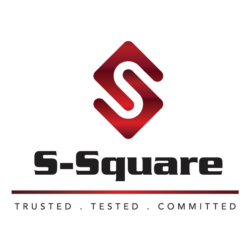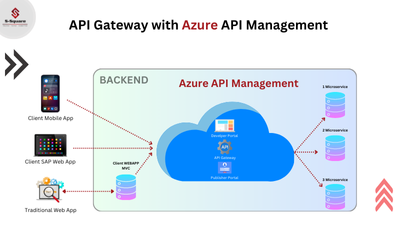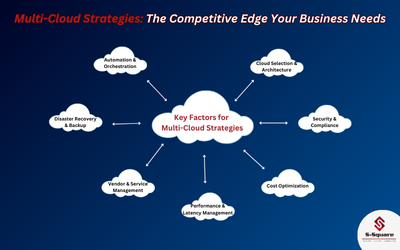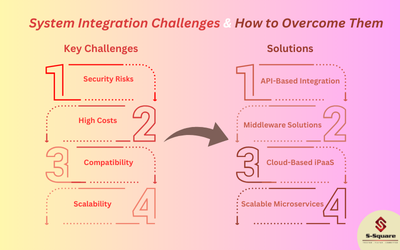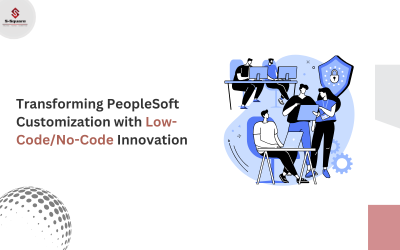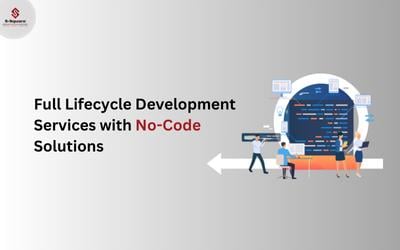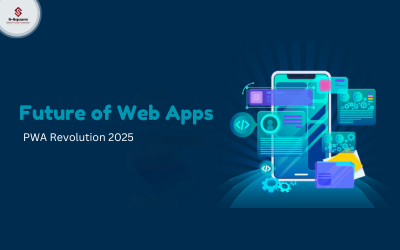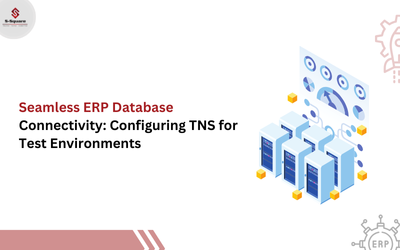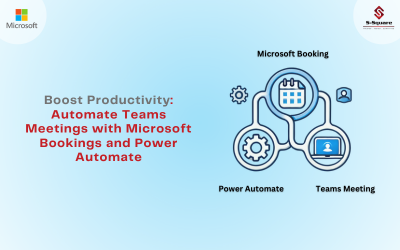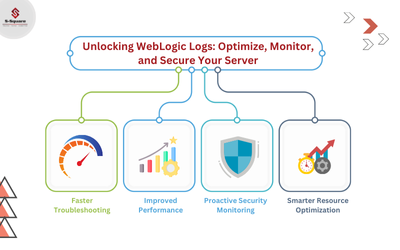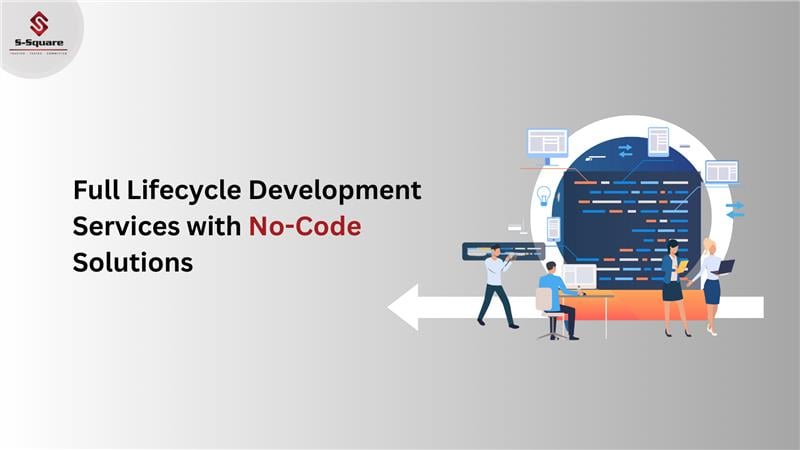
Introduction:
In today’s fast-evolving technological landscape, businesses must adopt agile, innovative approaches to deliver high-quality software at scale. Traditionally, Full Lifecycle Development—spanning requirements gathering, design, development, testing, deployment, and maintenance—has relied on detailed requirements driven, coding-heavy, resource-intensive processes. However, the emergence of No-Code platforms is rewriting the rules, enabling faster delivery, greater collaboration, and reduced operational complexities.
By removing coding as a barrier, No-Code technologies empower businesses to unlock new efficiencies while remaining scalable and secure. This blog explores the transformative potential of Full Lifecycle Development Services powered by No-Code, comparing traditional development practices to what’s now possible with tools like redSling’s No-Code platform.
The Paradigm Shift: Traditional Development vs. No-Code Development
Traditional Development Technologies
Full Lifecycle Development in traditional environments involves a sequential process heavily reliant on coding expertise. While it provides flexibility for complex, custom solutions, it often introduces inefficiencies:
-
- Long Development Cycles: Building features from scratch can take weeks or months.
- High Resource Requirements: Teams need skilled developers, testers, and infrastructure experts.
- Dependency on Tools and Platforms: Managing dependencies across environments increases complexity.
- Limited Collaboration: Non-technical stakeholders find it hard to contribute, leading to communication gaps.
No-Code Development Technologies
No-Code platforms break down these barriers by abstracting complexity. Using visual development interfaces and pre-built components, businesses can achieve:
-
- Rapid Development: Deliver applications in days rather than months.
- Simplified Collaboration: Enable business users to directly participate in application building.
- Reduced Costs: Eliminate the need for specialized coding resources.
- Seamless Scalability: Use containerized deployments (e.g., Docker) for portability across environments.
How No-Code Enables Full Lifecycle Development Efficiency
No-Code platforms like redSling eliminate traditional bottlenecks at every stage of the lifecycle. Here’s how they excel:
1. From Vision to Action: Faster Ideation and Planning
No-Code platforms allow businesses to visualize and prototype ideas faster, bridging the gap between ideation and implementation. For example:
- Create clickable prototypes to validate ideas early.
- Directly involve non-technical stakeholders in decision-making.
- Accelerate requirements gathering by leveraging prebuilt workflows and templates.
What’s Different?
Traditional development requires extensive documentation and planning before development can start, whereas No-Code allows simultaneous prototyping and validation.
2. Seamless Design and UI/UX Development
With No-Code platforms, design and development are integrated into a single workflow. For example, redSling’s Design-First UI approach enables developers to:
- Skip wireframes and directly create interactive designs.
- Use drag-and-drop editors to build intuitive user interfaces.
- Ensure consistency with reusable design components.
What’s Different?
Traditional UI/UX design involves multiple handoffs between designers and developers, whereas No-Code eliminates silos by enabling both roles to work on a unified platform.
3. Agile Development with Automation
No-Code platforms embrace agile principles by allowing rapid iteration and automation of repetitive tasks. Features include:
- Visual workflows for business logic, eliminating manual coding.
- Pre-integrated APIs for easy connectivity with third-party systems.
- Automated build and deployment pipelines (e.g., CI/CD with Docker images).
What’s Different?
Traditional development relies heavily on custom coding, which requires iterative testing and debugging. No-Code platforms automate much of this, accelerating delivery.
4. Rigorous Testing and Error-Free Deployments
With No-Code, testing is simplified through integrated tools that automate validation. redSling’s No-Code solutions package applications into Docker images, ensuring:
- Ensuring uniformity across development, staging, and production environments
- Fewer runtime errors due to containerized deployment.
- Automated test workflows for functional and performance testing.
What’s Different?
Traditional pipelines often struggle with dependency conflicts and environment discrepancies. No-Code encapsulates all dependencies within containerized packages, ensuring consistency.
5. Scalable, Platform less Deployments
A standout feature of platforms like redSling is their platform-less deployment architecture, which eliminates the need for runtime dependencies in live environments. By encapsulating applications into Docker images, organizations benefit from:
- Enhanced Scalability: Applications can be seamlessly deployed across clouds or on-premises environments.
- Simplified Maintenance: Updates are applied to containerized instances, reducing downtime.
- Security: Isolated containers minimize risks of cross-environment vulnerabilities.
What’s Different?
Traditional deployments require platform-specific runtime components, while No-Code solutions offer true portability without restrictions.
6. Maintenance and Continuous Improvement
Post-deployment, No-Code solutions simplify maintenance through built-in update mechanisms. Features include:
- Visual editors for real-time changes without redeploying code.
- Centralized dashboards for monitoring application performance.
- Automated scaling with Kubernetes or cloud-native services.
What’s Different?
Traditional updates often require redeploying codebases and managing version conflicts, whereas No-Code platforms streamline the entire process.
red Sling: A Trusted Partner for No-Code Full Lifecycle Development
Through our partnership with redSling, we bring unparalleled expertise in delivering Full Lifecycle Development Services powered by No-Code. Leveraging their innovative methodologies, including platform less deployments and Design-First UI, we help organizations:
-
- Accelerate time-to-market with rapid prototyping and streamlined pipelines.
- Reduce costs by eliminating dependencies on traditional coding resources.
- Enhance security with containerized applications and built-in safeguards.
- Achieve scalability and flexibility without being tied to specific platforms.
Conclusion: Transforming Development with S-Square and redSling
At S-Square, we empower businesses to embrace Full Lifecycle Development with the transformative capabilities of No-Code platforms. By leveraging redSling’s industry-leading methodologies, we enable organizations to achieve faster delivery, scalable solutions, and reduced costs—all while maintaining the highest standards of quality and security.
Whether you’re a startup looking to build your first application or an enterprise modernizing your development processes, S-Square is here to guide your journey. Experience the future of Full Lifecycle Development with us today!
FAQs on Full Lifecycle Development
What is Full Lifecycle Development?
Full Lifecycle Development refers to managing every phase of software creation, from planning to deployment and maintenance, in a unified and iterative manner. It ensures collaboration and continuous improvement.
What is Full Lifecycle Development vs. DevOps?
Full Lifecycle Development encompasses the entire software lifecycle, including planning, design, and post-deployment maintenance. DevOps, a subset of this approach, focuses on automating deployment pipelines and fostering collaboration between development and operations teams.
What is Full Lifecycle Development vs. SDLC?
SDLC refers to a traditional, structured framework for software development. Full Lifecycle Development modernizes SDLC by incorporating agile principles, No-Code solutions, and continuous feedback, offering greater efficiency and flexibility.
